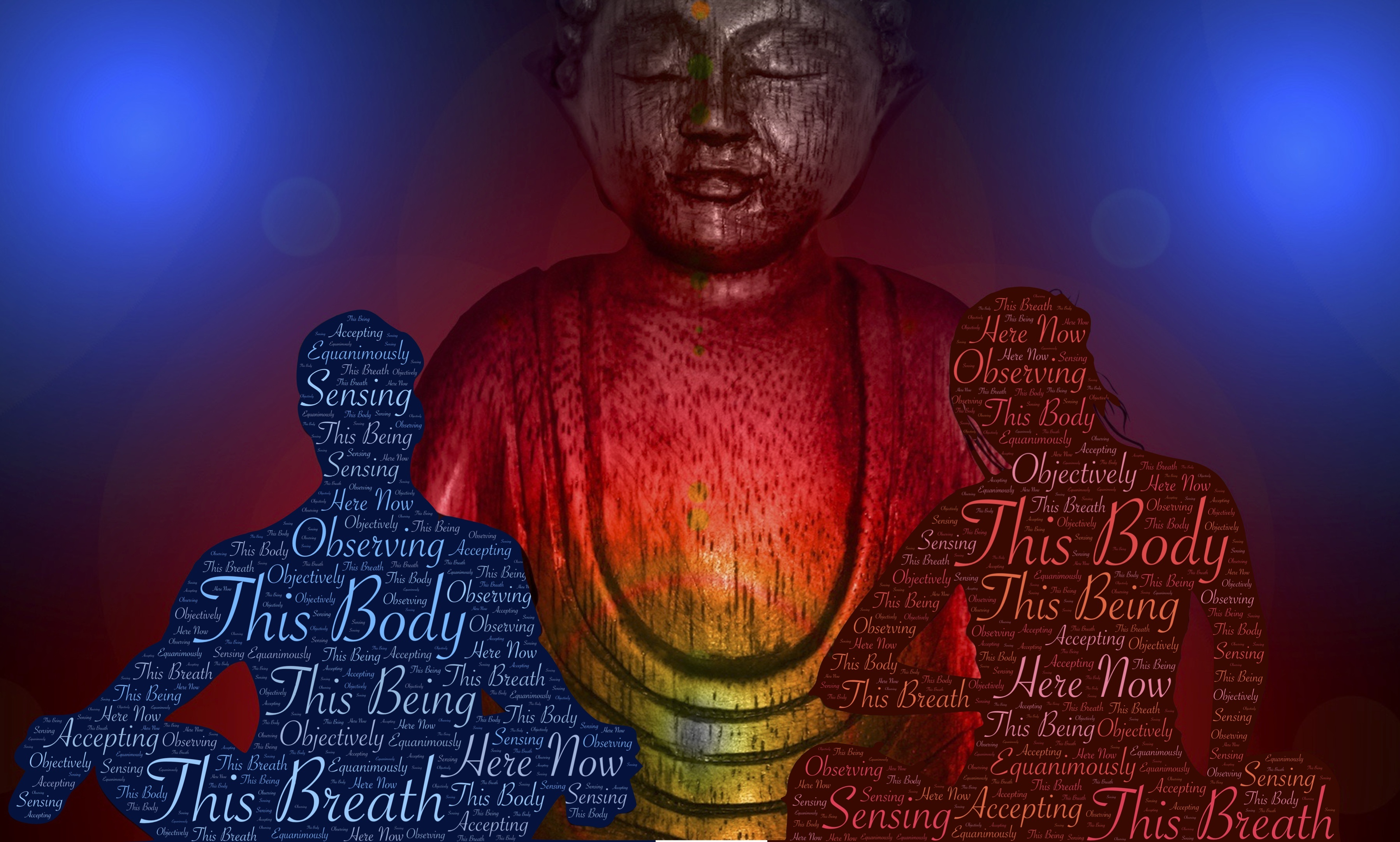I spent time in Thailand, in a monastery to experience meditation and specifically Vipassana Meditation. Vipassana meditation is the centrepiece of the teachings of Buddhism, and the word Vipassana literally translates as “insight.” The radical assertion is that by sitting in patient and compassionate awareness of the sensations of the body, each of us can come to deep insight into the nature of being human.
The fascinating thing about Vipassana meditation is that the more we learn to sit in steady awareness of the body, the more we find that our physical tension patterns are related to our emotional contractions, the unresolved feelings and memories in our minds. By bringing mindful compassion to this material we find healing and insight naturally arises and we become more liberated and integrated.
In Vipassana, the object of meditation is one’s own consciousness in the present moment. While we continue to use the breath as an anchor to the present moment, it is no longer the primary object. Instead, we become aware of whatever the most prominent stimulus is in that moment, and we allow that stimulus to be our object. It may be a thought, a feeling, a physical sensation, a sound, a smell, or just about anything else.
Whatever it is, we simply notice it without becoming involved in thinking about it. In this sense, we are working toward achieving an objective and non-reactive state of mind. At the same time, Vipassana is not primarily a relaxation technique and we are not trying to flee from reality or go into a trance. The goal is active and objective observation of our subjective experience, without attachment.
In terms of actual practice, try to find a quiet place where people, phones, and other distractions will not be an issue. Wear comfortable clothing and consider taking off your shoes. Sit up straight, either on the floor (perhaps on a cushion) or in a straight back chair. Place your hands on your knees or folded in your lap. Keep your eyes open, but not focused on any particular point or object. Take two or three deep breaths and begin to focus on the present moment. As you begin, use your breathing to anchor you to the here-and-now. As you continue, notice the most prominent stimulus, whatever it is, without engaging it.
Try to sit still and maintain focus for 20 minutes. Just as you are not reacting impulsively to the thoughts or feelings that you have, do not react impulsively to physical discomforts as they arise. For instance, if your nose itches, do not immediately reach up to scratch it. If you want, you can choose to scratch your nose. Or, if you want, you can choose just to let it be. Whatever you decide, act in mindfulness and with intentionality.
The following imagery is helpful in getting an understanding of meditation. I hope it is helpful to you.
The Park Bench
Imagine you are sitting on a park bench. As people pass by you, notice them. For a time, you allow them to become the centre of your focus. You notice the older woman walking the small dog. You notice the young man jogging. You note their appearance. You observe their behaviour. For as long as they are in front of you, they deserve your focus. If two people are in front of you, you notice them both. You do not need to invite anyone over to your bench to sit down and talk. Nor do you need to get up from your bench to walk with anyone. In as much as you engage them, you do so only from a distance. You observe them objectively from your bench. When they move on and are no longer in front of you, you let them go as you turn your attention to the next passer-by.
This park bench experience is analogous to an exercise that can be done with your thoughts, feelings, physical sensations, and observations of the space around you (the three levels of your expanding “bubble of awareness” from the first exercise). Imagine that the people in the park are your thoughts, feelings, etc. Sit quietly and allow yourself to become aware of your thoughts, feelings, sensations, and surroundings. At any given moment, whatever is the most prominent thought, feeling, sensation, or observation is the person in front of you in the park. Notice it. Describe it. For as long as it is the most prominent object allow it to be the focus of your attention. As it fades away, allow something else to become the focus of your attention. You do not need to chase after anything. You do not need to invite anything to sit with you. You are an objective observer. Just notice it and let it move on.
While spending time reflecting, connecting and being with myself recently I wrote the following –
“Waves of Love –
The spiral is at my core, going in and coming out, I felt connected and as I worked with colour I felt my heart open and soft waves of energy go out to the world.
I had a sense of joy, happiness and warmth”
Join the 3 Day Certificate in Mindfulness and Mindful-Living at ICPPD and learn more about Mindfulness and Meditation,
Enrol on ICPPD’s 8 week Online Course in Mindfulness and Mindful-Living Programme –








